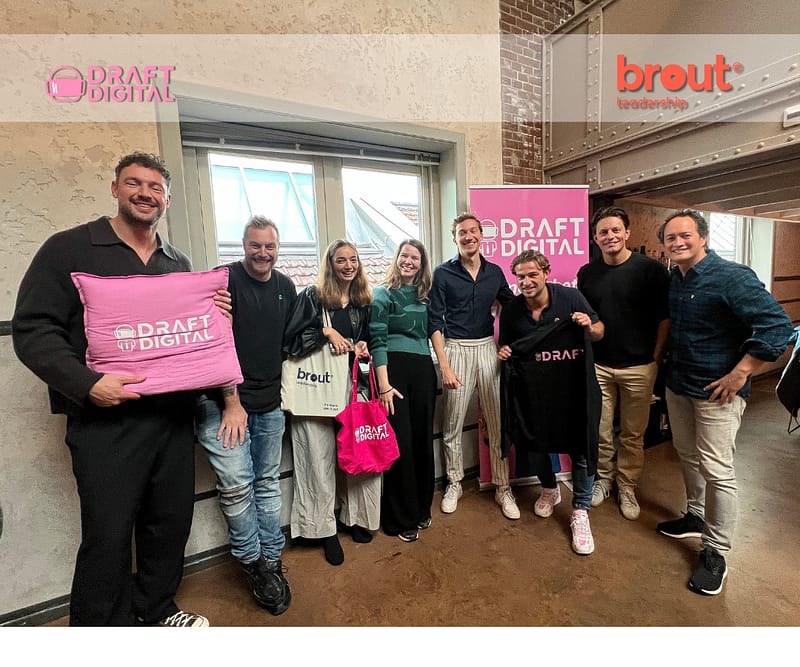In the media/advertising industry, it's more important than ever to stand out from the crowd and capture the attention of your audience. An effective way to achieve this is by implementing personalization in your email marketing campaigns. Many companies already use expensive marketing technology platforms such as Selligent, HubSpot, or Salesforce, but they have yet to fully utilize the capabilities of these platforms for email marketing. In this blog, we discuss why personalization in email marketing is a smart move and how it can contribute to increasing audience engagement and driving conversions. This approach can enhance the return on investment. We focus on several examples to kickstart personalization efforts, while also examining reasons why personalization may not be implemented.
Make a Strong First Impression
A personalized email, addressing the recipient by name, immediately creates a personal and authentic experience. It fosters a sense of appreciation and generates interest. Rather than receiving a generic message, the recipient feels special and engaged, leading to a higher likelihood of the email being opened and read. This is a common method of personalization and is used by many companies.
Add Relevance and Value
By segmenting and tailoring the content of your emails to the specific interests, needs, and preferences of your audience, you can provide relevant and valuable information. For example, you can make product recommendations based on past purchases or areas of interest, or send special offers that align with the individual needs of the recipient. This increases the likelihood that the recipient will take action because they receive something that is truly relevant to them.
Strengthen Audience Relationships
Personalization in email marketing enables you to build a strong bond with your audience. By demonstrating that you understand and value their preferences, you can foster a sense of trust and loyalty. It contributes to a positive brand experience and encourages recipients to be receptive to future interactions with your brand.
Improve Engagement and Conversions
Personalized emails have a higher chance of capturing the recipient's attention and leading to desired actions. By incorporating personalization elements such as dynamic content, customized offers, and call-to-actions that address the specific needs of the recipient, you foster engagement and increase conversion rates. The result is a more effective email campaign with measurable results.
Continuous Optimization and Growth
Personalization also provides valuable data and insights that you can use to continuously optimize and grow your email marketing strategy. By analyzing how recipients respond to personalized elements, you can identify trends, replicate successful approaches, and adjust less effective strategies.
Why Don’t All Advertisers Personalize?
Despite its benefits, many advertisers still don’t use personalization effectively in their emails. Some send multiple generic emails daily that fail to address consumer interests, causing subscribers to unsubscribe more often. This decline in reach is partly due to KPIs email marketers are measured against, they’re often rewarded for total sales volume rather than efficiency or engagement.
Therefore, it’s critical to translate your overall strategy into clear tactics and operational goals. This ensures the right KPIs are targeted at all levels, fostering long-term growth. Many email marketers may currently receive unclear briefs, even though companies have invested heavily in tools that enable personalization.
Misaligned Metrics for Personalization
Often, we see problems arise when business objectives are not accurately translated to operational marketers. In this example, let's consider sales. If email is the only driver, it's natural to focus primarily on the mass. By targeting a fixed customer base that may already make purchases, the target will likely be achieved. But what if it's not? Then it's also unclear which levers need to be adjusted.
For that reason, it's important to look at the various translations of business objectives into metrics. Some metrics that contribute to sales include:
- Open Rate: Higher open rates mean more people read your emails.
- Click-Through Rate (CTR): After opening, clicks show engagement with your site.
- Conversion Rate: How many people who clicked ultimately convert?
- Unsubscribe Rate: How many people ultimately do not want to receive emails anymore?
Together, these metrics explain why goals are or aren’t met and help identify areas for messaging improvement. Regular analysis keeps optimization on track and encourages continual improvement.
Mapping Journeys and Segments
If your email channel is measured by a single overarching goal, it often overlooks the various target groups within your audience. This makes it harder to optimize per segment and reduces focus on personalization.
Defining different audience segments with specific targets allows you to diagnose issues faster. Segment-level reporting highlights underperforming groups and clarifies problems, enabling swift solutions, something Draft Digital excels at. Moreover, focusing on segments lowers the barrier to start personalizing, as mailings are already segmented for sending.
A/B Testing
Growth requires experimentation. Establishing a test-and-learn culture is key. For broad targeting, tests might focus on different headlines or copy. But with personalization, A/B testing becomes more insightful, identifying which messages truly resonate with specific segments, or testing the effect of an additional email in the funnel. Setting test quotas in your objectives fosters adoption of personalized tactics.
Personal Growth
Beyond professional skills, personal growth is vital for email marketers. Continuous learning sparks creativity and innovation, enabling fresh ideas and unique approaches that improve campaigns. Personal development encourages stepping out of comfort zones and exploring new perspectives, driving deeper personalization.
Conclusion
Personalization in email marketing offers many benefits: creating personal experiences, adding relevance and value, strengthening audience relationships, and increasing engagement and conversions. Avoid pitfalls like over-emailing, lack of segmentation, and ignoring the right KPIs.
An effective personalization strategy includes optimizing metrics, segmenting audiences, running A/B tests, and fostering both professional and personal growth. This approach helps email marketers deliver successful campaigns and contribute to sustained growth. Want to learn how to translate strategic goals into operational tactics, or ready to start personalizing your email marketing? get in touch with us .







